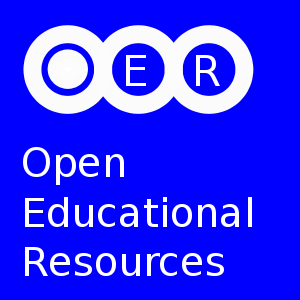 |
| Humboldt State University (Wikipedia) |
The structure of our course owes a lot to the excellent work of Humboldt State Universities instructional designers, like Riley Quarles who has developed the structure of the blogs for our Child Development program. Dan Fiore, another instructional designer I am working with, is putting together Wordpress and an open badge system.
The students for this course are new to online learning, but of the 1600 students who responded to our survey, 95% use Facebook. At the typical university that hosts MOOCs, there is a higher level of motivation and skill sets (Stanford for instance). What we know about this population is that we need to have modules on things like time management, online communication skills, motivation, study skills, and how to create a personal learning network. One of the key purposes of the course is to help the students figure out how to form online learning communities for academic and professional support. We do have a module called "LMS" (learning management system) and that is specific to our campus' installation of Moodle - other campuses could insert their LMS of choice there.
The MOOCs that I have participated in were made up mostly of grad students and education professionals. My work has mostly been in community colleges and state colleges, so the tools and skills we are teaching are different.
Where we are now:
1. We are using Wordpress. There will be a main course blog that will link all the topics of the course (which may be on pages or separate blogs). The facilitators will have blogs as will the students. The students will choose or create an assignment on the topic and post to their blog. This feed will be aggregated on the topic blogs.
2. We are using open badges. I know that motivation is an issue in online classes in our university system, and all the research I have read says that badges are one of the ways to address that issue. Plus, I want the students to have a
3. We are gathering data. We have sent out a survey to our students to see how they are accessing the web, where they are accessing it, and what tools they are already using. The course is based on previous courses and orientations I have created but each is different according to the needs of the student population. For instance, at Tacoma Community College, we had more students involved in virtual worlds like Ever Quest and Second Life. Humboldt State only had 6% of the respondents in online games.
4. Updating course materials. The course materials are from previous courses and orientations. All of the modules will be openly licensed with a CC-NC-SA license.
5. Getting out to the learning communities and asking people to help get out and push. I went to the Open Ed 13 conference to learn more about open badges and to meet more people who are teaching in MOOCs. I will be presenting on this at the DET/CHE conference in San Jose next week.
The illustration below is s rough sketch that is evolving - this is not meant to be a traditional hierarchical course but student driven: the student chooses which modules are important, the student chooses the assignments from the module (or creates one) and gets together online with students to complete the work.
I would love to talk to anyone who is working on a similar project. Feel free to email me or leave a comment. I will also post updates and my presentation here as things take shape.


















